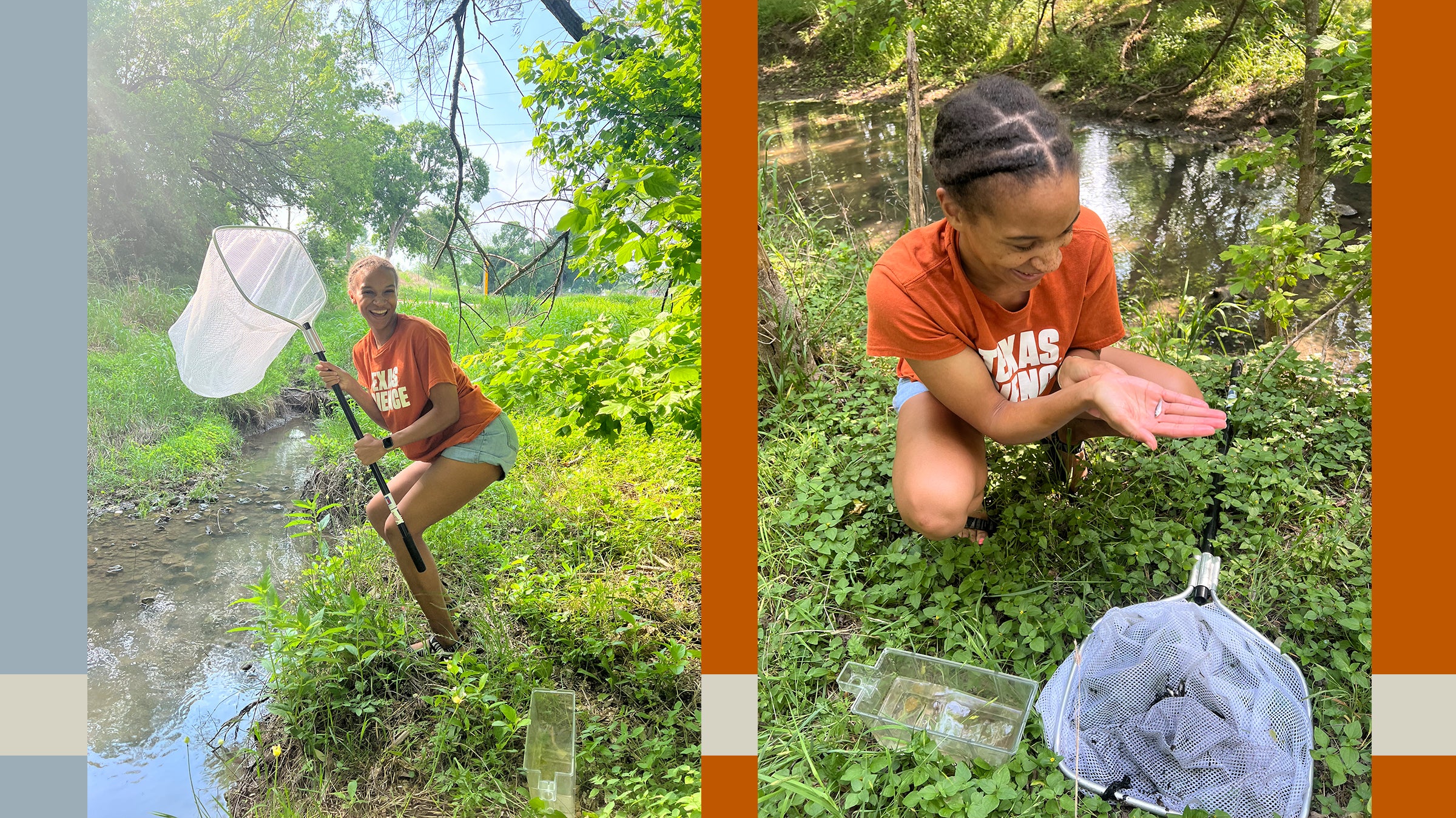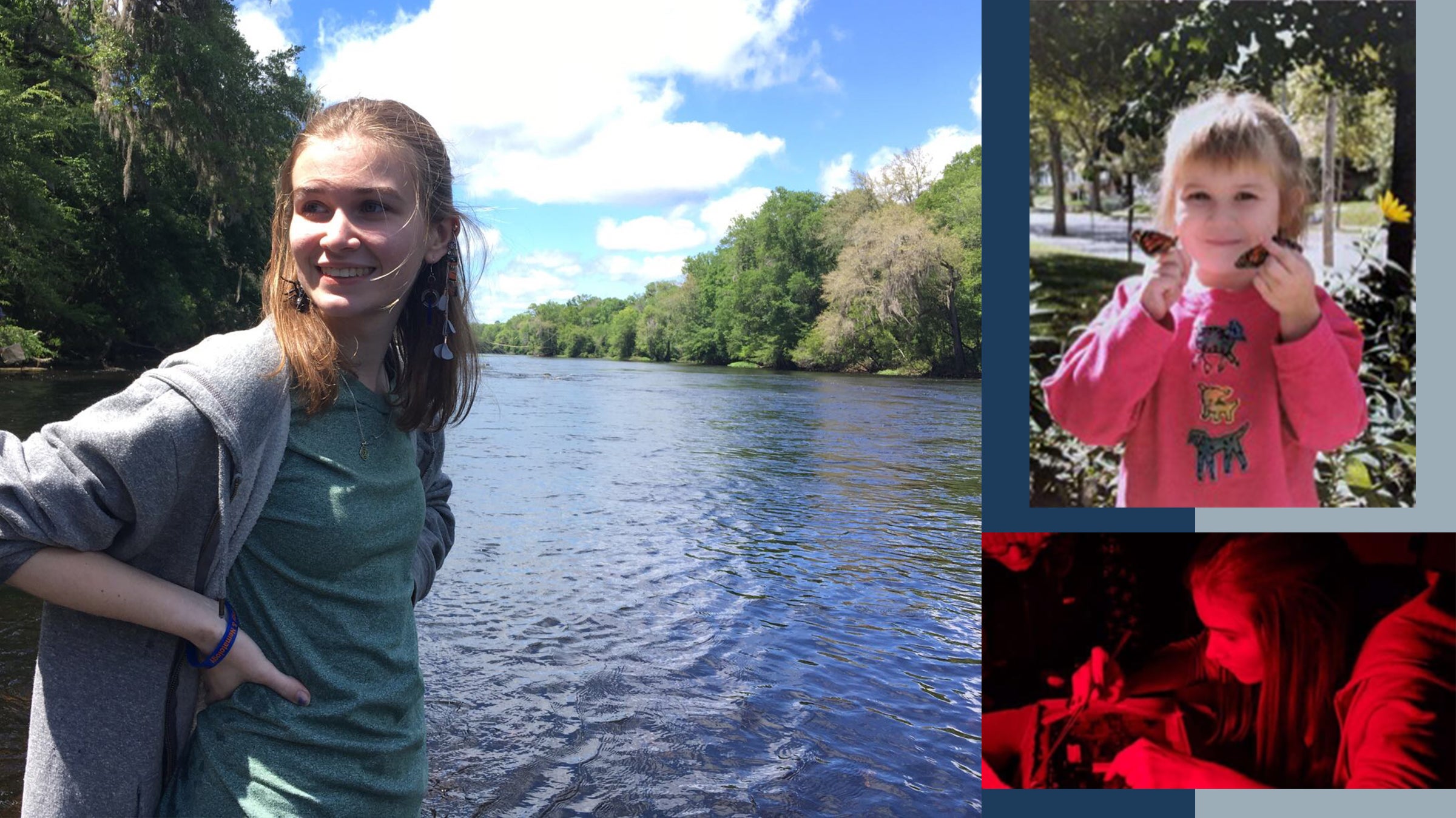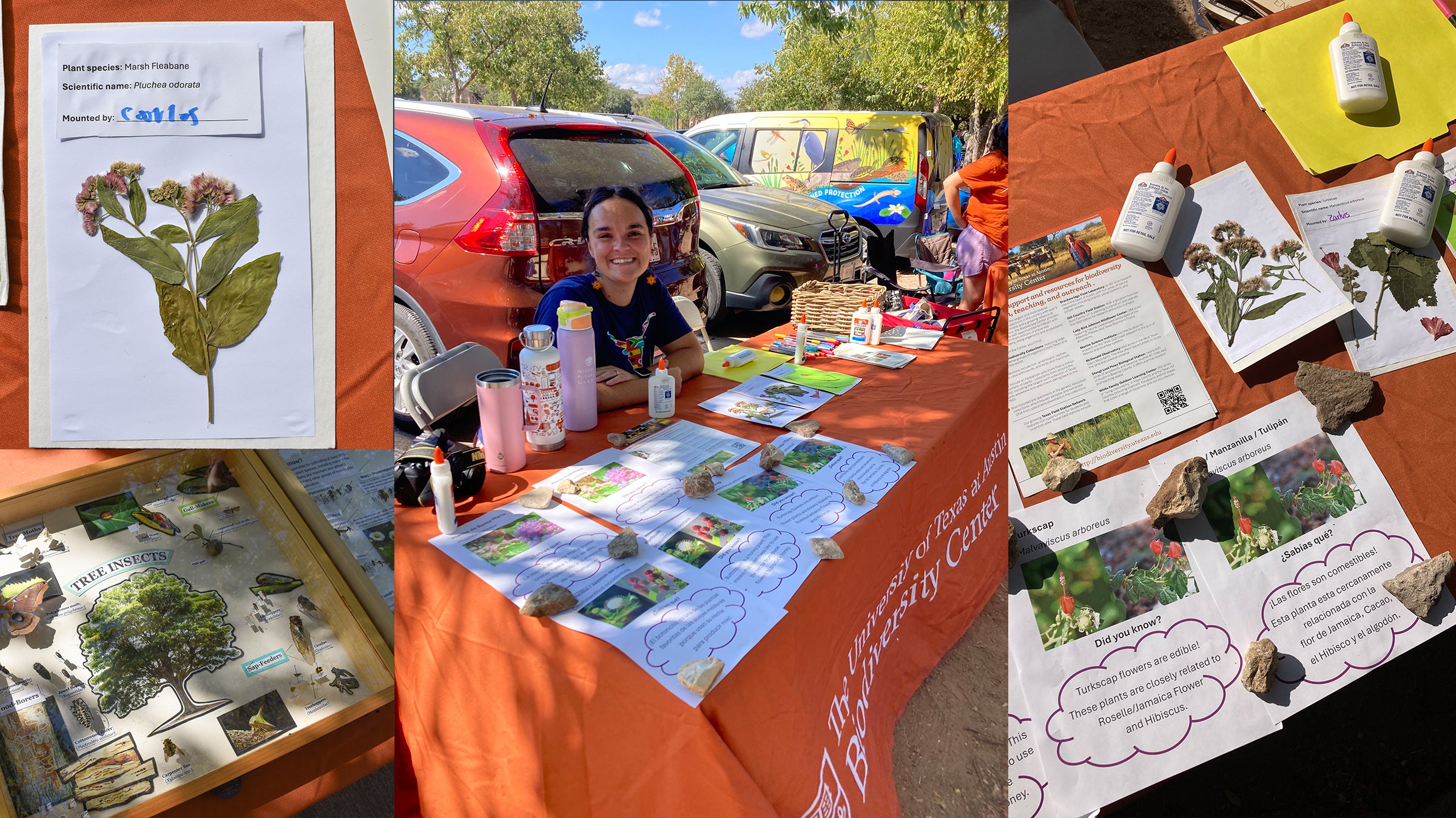
Marina out in the field in San Marcos, TX catching sailfin mollies to use for her behavioral experiments.
Tell us where you came from before UT, and what you studied then?
I am a Texas girl, born and raised! I attended Texas A&M University for my undergraduate degree, and then completed my Ph.D at Rice University. I worked with Dr. Julia Saltz to investigate how and why individuals varied in their social behaviors. For my dissertation research, I ran a ‘fruit fly fight club’ to study how the presence of an audience changed the behaviors of those engaged in a fight, and how audience members who viewed a fight would respond when interacting with previously observed fighters.
You use a social information framework to understand behavioral variation in populations. Can you explain what this means and how you got interested in this?
Animals (including humans!) have to navigate complicated and dynamic social groups. To decide who to interact with and who to avoid, animals can collect information by watching others around them, known as social information. Social information can change an individual’s decisions in interesting and unique ways. For example, two individuals can watch the same interaction between others, but have two different responses to the information they observe. My research seeks to understand behavioral variation by specifically investigating the differences in how individuals respond to social information. Individual variation provides the raw material for natural selection to act upon, so studying the causes and consequences of individual differences in social information use allows us to better predict how evolutionary change will proceed in social groups.
Does Texas present a unique situation, challenge or benefit for your research?
Being in Texas definitely presents a unique benefit for my research! I use sailfin mollies, a small fish, as a study system to investigate how females use social information to make mate choice decisions. Sailfin mollies have been introduced to several inland streams and rivers in Texas. There are a number of different waterways, many of them within just a couple hours drive from UT’s campus, where I can catch sailfins and test how they respond to the mating decisions of others.
How will being a Stengl-Wyer Scholar help advance your work?
In my previous research, I studied social information by using fruit flies as my study species. These animals had never known life outside of a laboratory, so while my findings were useful for understanding social information processes, I was limited on what conclusions I could make about how social information was used and evolved in natural populations. Being funded by the Stengl-Wyer Scholars Program advances my work by allowing me to expand my research program to study social information in both laboratory-reared and wild living animals. Studying how wild-caught individuals differ in their decision-making as a result of information collected from others will allow us to better understand the selection pressures that have driven the evolution of social information reliance.

A large female sailfin molly fish caught by Marina (left) in Brushy Creek Lake Park (right).
Where do you see your research agenda heading after UT?
After UT, I look forward to continuing in academia in a role that allows me to use my expertise in animal behavior to teach and inspire the next generation of biologists. I would love to also continue investigating the factors that drive social information reliance, and am especially excited about furthering my research agenda through close collaborations with undergraduate students. I’ve found that working with students, especially those participating in research for the first time, has resulted in some of my most rewarding experiences as a scientist. It’s thrilling to partner with undergraduate researchers as they experience firsthand the curiosity and discovery that attracted me to the field of biology!



